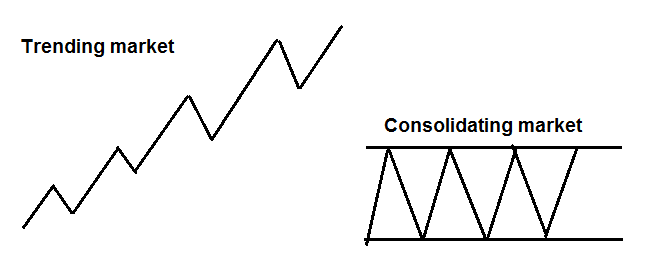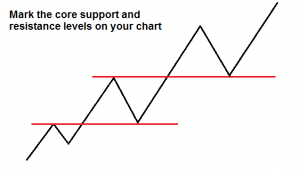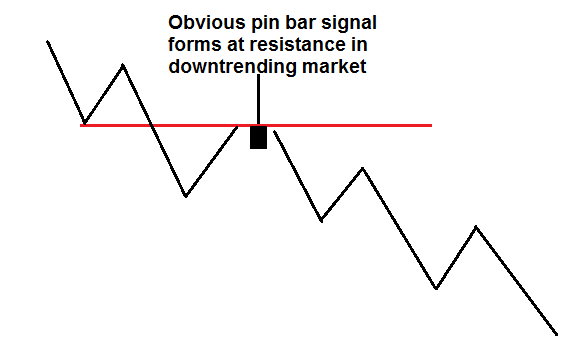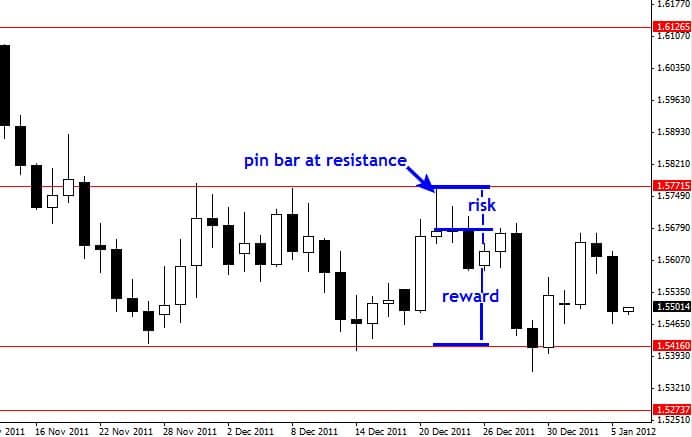In today’s article, we’ll explore why having a structured Forex trading plan is essential for long-term success. Then, I’ll walk you through an example plan to help you understand how to create one tailored to your own goals and trading style. Let’s dive in!
Why Every Trader Needs a Forex Trading Plan
A trading plan is best thought of as your personal roadmap for navigating the markets—more specifically, it’s a checklist that outlines each step of your trading process in a logical, repeatable sequence. This checklist guides you through every trade, helping you stay objective and aligned with both your short-term and long-term trading goals.
Don’t be misled into thinking your trading plan has to be lengthy or overly complex. Once you’ve developed a solid strategy—like price action trading—you’ll be able to streamline your approach into clear, concise points. Your plan can include a mix of words and visual cues, and ultimately, it should serve as your go-to guide for trade decisions.
The key reason you need a trading plan is to protect yourself from emotional decision-making. Forex trading can stir up intense emotions, and without a predefined plan, it’s all too easy to fall into impulsive, loss-making habits. A well-structured trading plan helps you act with discipline and clarity, instead of reacting emotionally to market fluctuations.
One of the greatest benefits of a trading plan is that it filters out low-quality trades and uncertain market conditions. This means fewer losing trades and a higher overall win rate. Many traders get caught up in a “run and gun” mindset, taking trades without purpose or precision. The truth is, the fastest way to boost your profitability is by trading less often but with higher quality—and a good trading plan will naturally guide you in that direction.
Now, let’s break down the key elements of an effective Forex trading plan.
Key Elements of a Forex Trading Plan
 Below are the essential components to include in your Forex trading plan. You’re free to expand on them if needed, but keep it streamlined—an overly complex plan can be difficult to follow consistently. In the next section, I’ll walk you through examples of each item:
Below are the essential components to include in your Forex trading plan. You’re free to expand on them if needed, but keep it streamlined—an overly complex plan can be difficult to follow consistently. In the next section, I’ll walk you through examples of each item:
- Set Clear Goals: Outline your short-term and long-term objectives. What do you want to achieve in the next few months? What’s your vision for the next few years?
- Define Your Trading Strategy: Specify the exact approach you’ll use to analyze the markets—this includes your preferred chart patterns, indicators, timeframes, and any specific setups you rely on to enter and exit trades.
- Establish Your Money Management Rules: Decide how much capital you’re willing to risk per trade, what kind of reward-to-risk ratios you’re aiming for, and what your longer-term plan is for managing profits—such as monthly withdrawals once you become consistently profitable.
- Account for External Factors: Note details like the currency pairs you’ll trade, your ideal trading sessions, and any key news events that could impact the market.
- Implement a Pre-Trade Checklist: Before you execute a trade, ask yourself: “Is this setup obvious and compelling, or am I trying to force it?” Only act on trades that clearly meet your criteria.
- Wrap Up Your Plan: Conclude your trading plan or checklist with a reminder to review everything before committing to a trade. Keep it concise, actionable, and personalized.
These components form the core structure of a reliable Forex trading plan—your foundation for staying disciplined, focused, and consistent.
Sample Forex Trading Plan Template
(Note: This is a hypothetical example with arbitrary figures, meant to serve as a starting point for creating your own plan. It’s not a reflection of my personal trading details, but it does follow the general structure I recommend. Feel free to customize or expand on it based on your trading style and goals.)
Forex Trading Plan
Trading Goals
- Short-Term Goals: Generate consistent monthly profits to supplement my current income. Focus on building patience and discipline by strictly following my trading plan with every trade.
- Long-Term Goals: Grow my trading account to $25,000 by consistently applying my strategy with precision, maintaining emotional control, and adhering to my plan without exception.
- Ongoing Commitment: Avoid overtrading, stay focused, and remain disciplined—no impulsive decisions, only well-planned, high-quality trades.
Forex Trading Strategy
Here’s the structured approach to scan the markets and identify potential price action trade setups:
1) Assess Market Conditions: Start by identifying whether the market is trending or consolidating. In a trend, look for higher highs and higher lows in an uptrend, or lower highs and lower lows in a downtrend. In a range-bound (sideways) market, identify clear support and resistance zones where price is bouncing between levels. This step sets the context for all trade decisions and ensures alignment with the broader market direction.
2) Mark Key Daily Support and Resistance Levels: Once the market condition is clear, draw the most relevant support and resistance levels on the daily chart. These levels act as decision points and confluence zones—areas where price action patterns are more likely to form and provide higher-probability setups.
3) Watch for Clear Price Action Signals at Confluence Areas: Focus on identifying strong, unmistakable price action signals that occur at or near your marked levels. Only take trades that meet your criteria for clarity and confluence. Examples include pin bars, engulfing bars, or inside bars that align with the overall market structure. Include visual examples in your plan to stay anchored to what high-quality setups should look like and to avoid forcing trades that don’t meet your standards. This step-by-step framework ensures you’re always trading in sync with the market’s flow and with a focus on precision, not frequency.
Money Management
4) Determine the Most Logical Stop Loss Placement: Identify the most sensible place for your stop loss based on market structure—not just a fixed number of pips. Then, calculate the dollar amount you’re fully comfortable risking on this trade. Always measure your risk in dollar terms, not just percentages or pips, to maintain a clear understanding of your financial exposure.
5) Plan Your Exit and Reward Target: Define your profit target based on realistic expectations within current market conditions. Ask yourself: Is a 1:2 risk-to-reward ratio (or better) achievable given the nearby support/resistance levels? Make sure the reward target aligns with both price structure and momentum to justify the risk you’re taking.
Additional Considerations
6) Which Currency Pair Is Involved?: Identify the specific currency pair you’re analyzing. Is it one of the major pairs such as EUR/USD, GBP/USD, AUD/USD, USD/JPY, EUR/JPY, GBP/JPY, USD/CAD, USD/CHF, or NZD/USD? Major pairs tend to offer better liquidity and tighter spreads—factors that can influence trade quality.
7) During Which Trading Session Did the Setup Form?: Note the session in which the trade setup appeared. Was it during the high-volume European or New York sessions, when price movements are typically more reliable? Or did it occur during the lower-volatility Asian session, where setups may carry more risk due to thinner market activity?
Final Trade Check
8) Confirm the Setup Is Clear and Convincing: Before placing the trade, ask yourself: “Is this setup so clear and compelling that it practically demands my attention, or am I forcing it by overanalyzing and second-guessing?” Only take trades that stand out immediately and meet your criteria without hesitation. If you’re trying too hard to justify the trade, it’s probably not worth taking.
Conclusion
By now, you should have a clear understanding of how to structure your own Forex trading plan and what essential components it should include. The truth is, having a solid, well-thought-out trading plan is one of the fastest ways to improve your results and stay on track toward your goals.
Think of your trading plan as the business plan for your trading career. You wouldn’t launch a business without a plan—so don’t approach the markets without one either. Successful trading requires structure, discipline, and consistency, and a trading plan provides the foundation for all three.
Once your plan is in place, the key is to use it consistently. Refer to it every time you analyze or enter the market. Doing so will help build the habits of patience and discipline—two of the most important traits for long-term profitability in trading.






